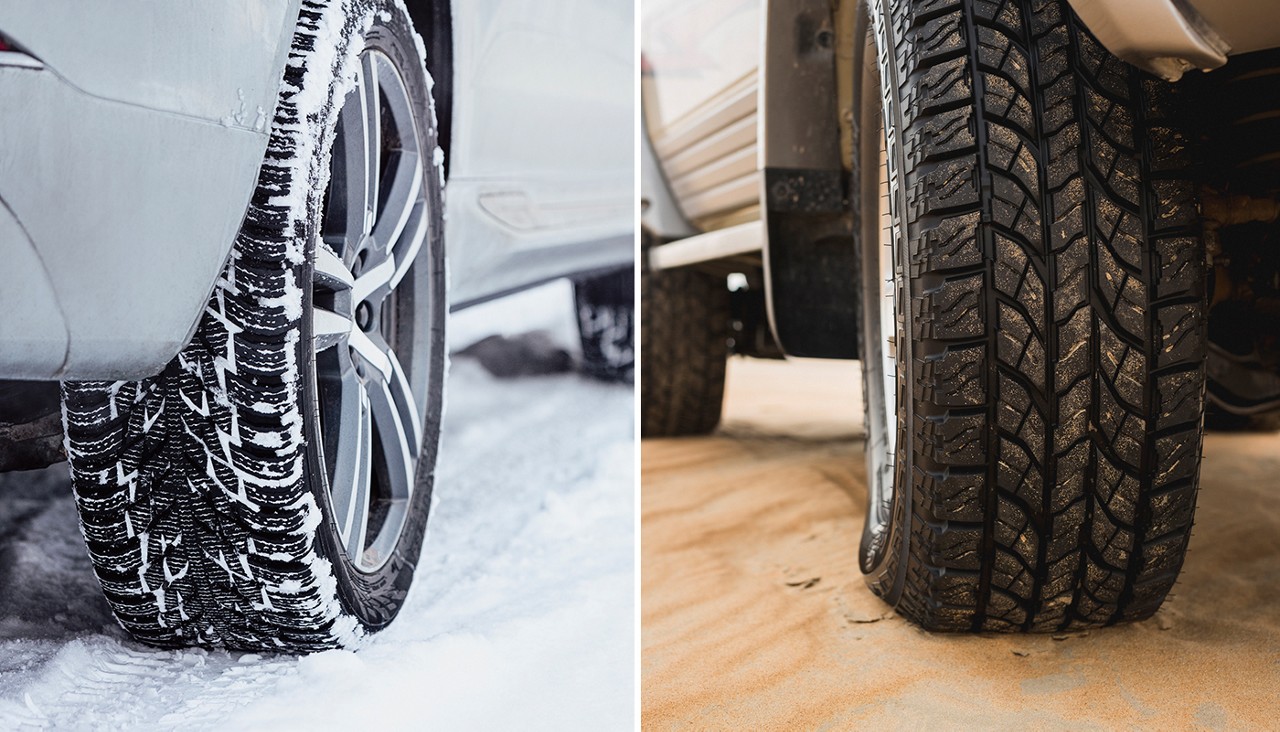To ensure you receive the best service possible,
please enter your zip code below:

Have you ever noticed how a basketball doesn’t bounce well when it’s low on air, or how a soccer ball feels stiff and hard to control when it’s overinflated? That’s because air pressure directly affects how a ball performs, impacting bounce, grip and how it moves.
The same is true for your car’s tires. When tire pressure is too low, your vehicle won’t handle as well, your fuel efficiency drops, and your tires wear out faster. Too much pressure makes the ride rough and reduces traction.
Get help if you find yourself stranded on the side of the road. Use the AAA Mobile app to call Roadside Assistance.
Download nowJust like with a basketball or soccer ball, your car’s tires rely on the right amount of air pressure to perform properly. It’s not just the rubber doing the work; it’s the air inside that supports the weight of your vehicle and helps you stay in control.
When your tires are underinflated, they can feel sluggish, reduce your ability to steer or stop quickly, and wear out faster. Overinflated tires, on the other hand, become too stiff, which can reduce traction and make the ride feel harsh.
To drive safely and smoothly, your tires need the right balance. Just like a well-inflated ball bounces true and rolls straight, properly inflated tires help your car respond the way it should in everyday driving.
When your tires don’t have enough air, more of the rubber touches the road. This creates several safety and performance issues that can make driving riskier:
Overinflated tires: While overinflated tires aren’t as risky as underinflated ones, they can still wear out faster than they should. Most modern tires can handle extra pressure without blowing out, but too much air causes the center of the tread to wear down more quickly than the edges. This uneven wear can shorten the life of your tires and reduce traction over time.

And here’s where the weather comes in: tire pressure changes with temperature. For every 10-degree drop in temperature, your tires can lose about 1 PSI (pound per square inch).
That’s why you often get a flashing tire pressure light in colder months—it’s not a defect, it’s just physics. To stay safe and keep your car performing well, it’s important to check your tire pressure regularly, especially during seasonal changes.
Tire pressure isn’t a “set it and forget it” adjustment—it requires regular monitoring because it fluctuates over time. Several factors can cause these changes: punctures, overloading, altitude, time and, notably, temperature. And the most obvious: if there’s a hole, air leaks out.
If weight compresses the tire, pressure shifts. Altitude changes the surrounding air pressure. Even without damage, tires naturally lose air over time. But how and why does temperature affect tire pressure?
A helpful rule to remember for every 10°F change in temperature, your tire pressure can go up or down by 1–2 PSI.
So on a hot summer day, your tires might become overinflated even if you haven’t added air. In the winter, they might lose pressure without having a leak.

To keep your car safe and running efficiently, it’s a good idea to check your tire pressure regularly, especially when the seasons change. You don’t need to grab a pressure gauge every time you drive, but it is smart to check:
The number listed on your driver’s door jamb or in your owner’s manual refers to “cold tire pressure.” That means you should check your tires before you drive—ideally after the car has been sitting overnight. Once you start driving, the tires heat up, which raises the pressure temporarily and gives you an inaccurate reading.

To get an accurate reading, use a tire pressure gauge. There are three common types:
Always inflate your tires to the level recommended by your vehicle’s manufacturer. This information is on a sticker inside the driver’s door jamb or in the owner’s manual.
Keeping tires at the right pressure helps:
It’s a quick and easy check that can help keep you—and your tires—safe on the road.
A: Cold weather causes the air in your tires to contract, lowering the pressure. Even a 10°F drop can cause a 1–2 PSI loss, triggering the warning light.
A: At least once a month, and before long trips or major seasonal changes. Tires naturally lose 1–2 PSI each month even without leaks.
A: In the morning or after your car has been sitting for several hours. This gives you an accurate “cold tire” reading.
AAA to the rescue
Get help if you find yourself stranded on the side of the road. Use the AAA Mobile app to call Roadside Assistance.